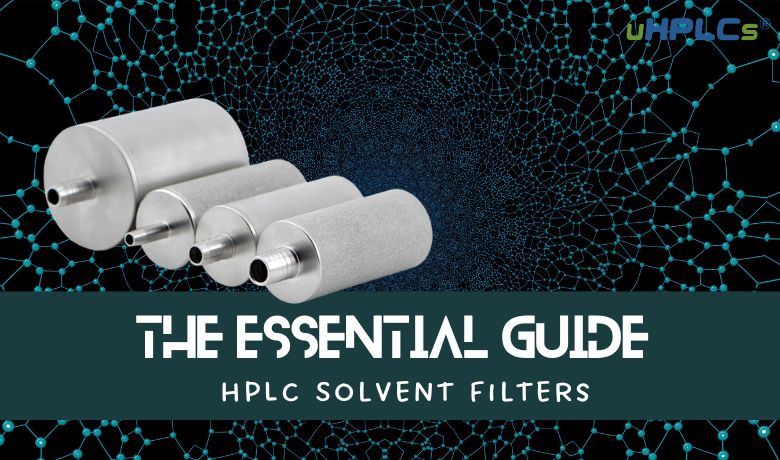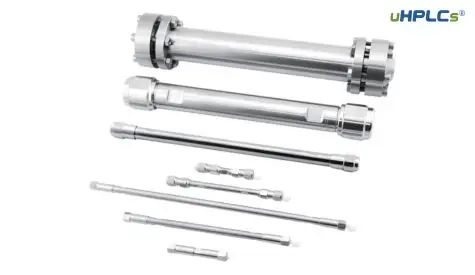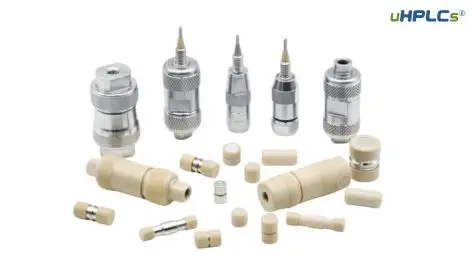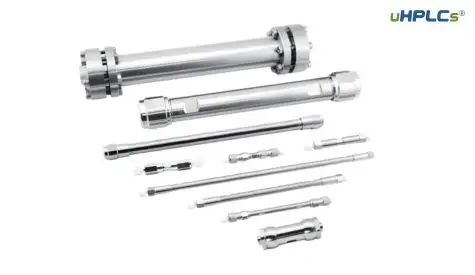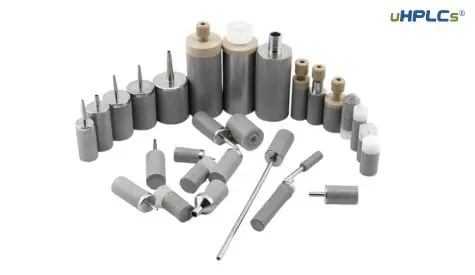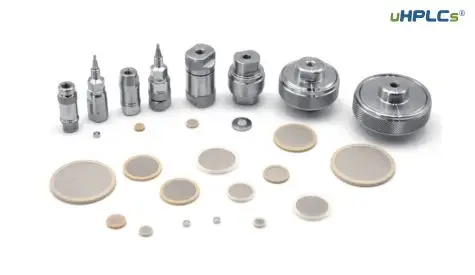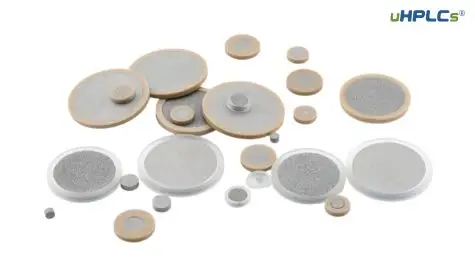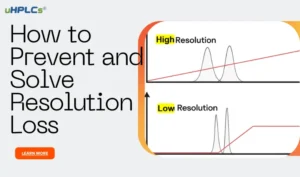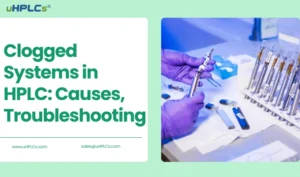High-Performance Liquid Chromatography (HPLC) is a powerful analytical technique widely used in various fields, including pharmaceuticals, environmental science, and food analysis. It separates and analyzes complex mixtures based on their chemical properties, offering high sensitivity and accuracy.
However, the quality of HPLC results relies heavily on the purity of the mobile phase, the solvent used to carry the sample through the system. Impurities in the mobile phase can lead to:
- Peak broadening: Affecting resolution and reducing the ability to distinguish between closely eluting peaks.
- Increased background noise: Making it difficult to detect small peaks.
- Clogging of the column: Reducing the lifespan of the expensive column and impacting its performance.
This is where HPLC solvent filters play a crucial role. They act as the first line of defense, removing unwanted particles, precipitates, and microbes from the mobile phase before it enters the HPLC system.
By using the right filters and maintaining them properly, we can ensure the accuracy and reliability of our HPLC results, extend the lifespan of our equipment, and reduce overall costs.
So, In this blog. we will explore the essential aspects of HPLC solvent filters, including:
- Selection: Choosing the right filter based on pore size, material compatibility, and solvent type.
- Use: Proper installation, handling, and replacement of filters.
- Maintenance: Cleaning and storage procedures to ensure long-lasting performance.
Stay tuned for the next sections where we will delve deeper into each of these topics!
Understanding HPLC Solvent Filters
HPLC solvent filters are specialized filters designed to remove impurities from the mobile phase used in High-Performance Liquid Chromatography (HPLC) analysis. They ensure the purity of the mobile phase, which is crucial for achieving accurate and reliable results.
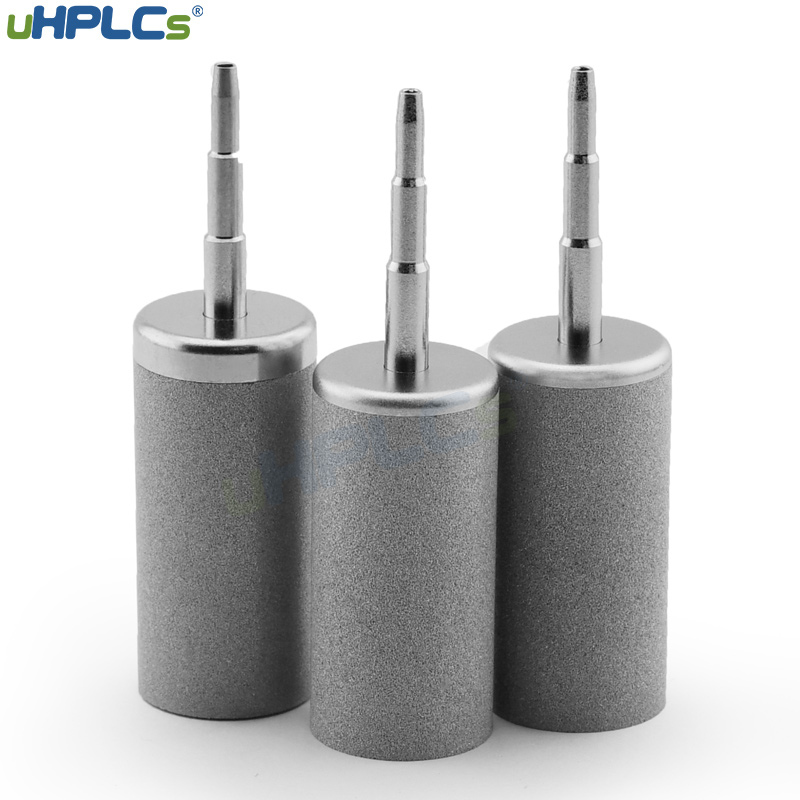
Imagine a highway for molecules. The mobile phase acts as the road, carrying the sample through the intricate network of the HPLC system. Just like debris on a highway can disrupt traffic flow, impurities in the mobile phase can interfere with the separation and detection of the analytes.
Here’s where HPLC solvent filters come in. By removing these unwanted particles, precipitates, and microbes, they guarantee a smooth and efficient “journey” for your sample through the HPLC system.
In essence, HPLC solvent filters serve two primary purposes:
- Protect the HPLC system: They prevent particles from clogging the column, pumps, and other sensitive components, extending their lifespan and reducing the need for costly repairs.
- Improve data quality: By eliminating impurities, they ensure clean and accurate separation of the analytes, leading to reliable and reproducible results.
Additional points to consider in this section:
- Different types of HPLC solvent filters: membrane filters, in-line filters, and degassing filters.
- Pore size considerations for filtering different sizes of particles.
- Compatibility of filter materials with various solvents.
- Importance of using high-quality filters to avoid leachables and contamination.
By understanding the vital role of HPLC solvent filters, we can make informed choices to ensure the optimal performance and accuracy of our HPLC assays.
Types of HPLC Solvent Filters
HPLC solvent filters come in various types, each with its unique characteristics and applications. Choosing the right filter depends on several factors, including the desired pore size, solvent compatibility, and intended use.
Here are three main types of HPLC solvent filters:
1. Membrane Filters:
- Description: These are disposable filters made of a porous membrane, typically nylon, PTFE, or PVDF.
- Applications: Ideal for filtering small volumes of mobile phase (up to 1 liter) and removing particles down to 0.2 microns.
- Advantages: Easy to use and replace, readily available, and relatively inexpensive.
- Disadvantages: Can clog easily with high-particulate samples, limited capacity, and may leach extractables into the mobile phase.
2. In-Line Filters:
- Description: These are reusable filters installed directly in the HPLC solvent line. They are made of various materials such as stainless steel, PEEK, or glass.
- Applications: Suitable for filtering large volumes of mobile phase and protecting sensitive HPLC components from larger particles (typically > 10 microns).
- Advantages: Reusable, long-lasting, can handle high flow rates, and offer excellent filtration efficiency.
- Disadvantages: More expensive than membrane filters, require cleaning and maintenance, and may not be compatible with all solvents.
3. Degassing Filters:
- Description: These filters combine particle filtration with degassing functionality. They remove dissolved gases from the mobile phase that can cause baseline noise and affect peak shapes.
- Applications: Crucial for analysis of volatile compounds or when using highly sensitive detectors.
- Advantages: Eliminate gas bubbles from the mobile phase, improving data quality and sensitivity.
- Disadvantages: More complex and expensive than conventional filters, require additional maintenance.
Comparison of Materials and Designs:
Each type of filter offers advantages and disadvantages depending on the specific application. Here’s a table summarizing the key differences:
| Type | Material | Pore Size | Applications | Advantages | Disadvantages |
|---|---|---|---|---|---|
| Membrane | Nylon, PTFE, PVDF | 0.2 μm – 5 μm | Small volume filtration, particle removal | Easy to use, inexpensive | Clogs easily, limited capacity, potential leaching |
| In-Line | Stainless steel, PEEK, glass | 10 μm – 50 μm | Large volume filtration, component protection | Reusable, long-lasting, high flow rates | More expensive, requires cleaning, potential solvent incompatibility |
| Degassing | PTFE membrane with degassing chamber | 0.2 μm – 5 μm | Gas removal, improved data quality | Eliminates gas bubbles, enhances sensitivity | Complex, expensive, requires maintenance |
Additional points to consider:
- Compatibility of filter materials with different solvents and sample matrices.
- Pressure limitations of the filter housing.
- Availability of replacement filters and ease of maintenance.
By understanding the different types of HPLC solvent filters and their characteristics, you can make an informed decision to optimize your chromatography results.
The Role of Solvent Filters in HPLC
Protecting the System:
HPLC systems are complex and delicate instruments. Impurities in the mobile phase can wreak havoc on these systems, leading to:
- Clogged columns: Particles can accumulate in the column, reducing its separation efficiency and lifespan. Replacing a clogged column can be costly and time-consuming.
- Damaged pumps and seals: Abrasive particles can wear down the pump’s components, causing leaks and reduced flow rates. Seals and gaskets can also degrade from exposure to aggressive chemicals.
- Increased baseline noise: Fine particles can scatter light, leading to a noisy baseline that can obscure small peaks and affect data interpretation.
- Reduced sensitivity: Impurities can interact with the sample or detector, leading to lower peak intensities and reduced sensitivity.
By removing these contaminants, HPLC solvent filters act as a shield, protecting the system’s integrity and prolonging its lifespan. This translates to reduced downtime, lower maintenance costs, and improved overall system performance.
Enhancing Chromatography Results:
Clean and pure mobile phase is essential for achieving optimal separation and accurate results. Solvent filtration ensures this by:
- Improved peak resolution: By removing particles, the filter allows for better separation of closely eluting peaks, leading to sharper and more defined peaks.
- Reduced background noise: By eliminating fine particles, the baseline noise is minimized, making it easier to detect small peaks and improve the signal-to-noise ratio.
- Increased sensitivity: Cleaner mobile phase reduces interactions with the sample and detector, leading to higher peak intensities and improved sensitivity.
- Enhanced reproducibility: Consistent filtration ensures consistent results across different analyses, improving the reliability and reproducibility of your data.
Therefore, using the right HPLC solvent filters is an investment that pays off in terms of improved data quality, increased system uptime, and reduced costs.
Additional points to consider:
- Impact of solvent filtration on peak shape and tailing.
- Importance of using filters specifically designed for HPLC applications.
- Potential for filter bleed and its effect on data quality.
By taking these factors into account, you can ensure that your HPLC solvent filtration strategy is optimized for achieving the best possible results.
How Choosing HPLC Solvent Filter
Selecting the right HPLC solvent filter is crucial for ensuring optimal system performance and reliable results. Several factors need to be considered when making this decision:
1. Pore size:
This determines the size of particles the filter can remove. For most HPLC applications, a pore size of 0.2 µm or 0.45 µm is sufficient. However, for highly sensitive analyses or when using smaller particles in the column, a 0.1 µm filter might be necessary.
2. Membrane material:
Different materials offer varying degrees of chemical compatibility and resistance to different solvents. Common choices include:
- Nylon: Widely used for aqueous solutions and offers good chemical resistance.
- PTFE: Chemically inert and suitable for a broad range of solvents, including organic solvents and strong acids.
- PVDF: Offers high chemical resistance and low protein binding, making it suitable for biological samples.
3. Filter capacity:
This refers to the total volume of mobile phase the filter can effectively handle before clogging. Consider the typical volume of mobile phase used in your analyses when choosing the appropriate filter capacity.
4. Filter housing compatibility:
Ensure the filter is compatible with the housing or filter holder you intend to use. Different housings have specific pressure and flow rate limitations, so choose a filter that fits these parameters.
5. Solvent compatibility:
Always verify that the filter housing and membrane materials are compatible with the solvents used in your HPLC system. Using incompatible materials can lead to leaching, contamination, or even equipment damage.
6. System pressure limitations:
Choose a filter that can withstand the operating pressure of your HPLC system. Excessive pressure can damage the filter housing or membrane.
7. Additional considerations:
- Degassing capability: If your analysis involves volatile compounds, consider using a degassing filter to remove dissolved gases from the mobile phase.
- Cost: HPLC solvent filters range in price depending on the material, pore size, and filter capacity. Choose a filter that balances quality and cost-effectiveness.
- Brand reputation: Opt for filters from reputable manufacturers known for their quality and reliability.
Compatibility with Different Solvents and HPLC Systems:
It’s important to choose a filter compatible with both the solvents you use and your specific HPLC system. Here are some examples:
- For aqueous mobile phases, nylon or PVDF filters are often suitable choices.
- For organic solvents, PTFE filters are recommended due to their superior chemical resistance.
- For HPLC systems with high operating pressures, stainless steel filter housings are required.
- For UHPLC systems, filters with a smaller pore size (e.g., 0.1 µm) and lower pressure drop are necessary.
By carefully considering these factors and consulting the manufacturer’s specifications, you can make an informed decision and choose the right HPLC solvent filter for your specific needs.
Installation and Use of HPLC Solvent Inlet Filters
Solvent inlet filters play a crucial role in ensuring the purity of mobile phase and protecting your HPLC system. Proper installation and use are essential for maximizing their effectiveness. This section provides a step-by-step guide and best practices for handling solvent inlet filters:
1. Preparation:
Before starting, gather the necessary materials:
- HPLC solvent inlet filter (compatible with your system and solvents)
- Filter housing or holder (if required)
- Wrenches or tools (if needed)
- Gloves
- Kimwipes or clean wipes
- Degassed solvent (compatible with mobile phase)
2. Installation:
Follow these steps for proper installation:
- Wash your hands thoroughly and wear gloves.
- Inspect the filter and ensure it is undamaged.
- Connect the filter to the filter housing or holder. Tighten the connections firmly but avoid over-tightening.
- Prime the filter with degassed solvent to remove any trapped air bubbles.
- Connect the filter to the solvent inlet line of your HPLC system.
- Purge the system with mobile phase to remove any remaining air bubbles.
- Set the desired flow rate according to your analysis conditions.
- Monitor the pressure gauge to ensure it remains within the operational range.
3. Best Practices:
- Replace the filter regularly according to the manufacturer’s recommendations or when the pressure drop exceeds a specified level.
- Never use a filter beyond its intended lifespan.
- Always prime the filter with degassed solvent to prevent air bubbles from entering the system.
- Store unused filters in a cool, dry place.
- Clean the filter housing or holder regularly to prevent contamination.
- Use filters designed specifically for HPLC applications.
- Follow the manufacturer’s instructions carefully.
Additional Tips:
- Consider using in-line filters for large volume filtration or additional protection for sensitive components.
- If using a degassing filter, ensure it is properly connected and functioning correctly.
- Monitor the performance of the filter by regularly checking the pressure gauge and for any signs of reduced flow rate or contamination.
- Document your filter changes and maintenance procedures for future reference.
Cleaning and Maintenance of HPLC Solvent Inlet Filters
Importance of Regular Cleaning and Maintenance:
Regular cleaning and maintenance of HPLC solvent inlet filters are crucial for ensuring their optimal performance and extending their lifespan. Over time, filters can become clogged with impurities, leading to:
- Increased pressure drop: This can reduce the flow rate of the mobile phase and affect chromatographic results.
- Clogged columns: Particles trapped in the filter can migrate to the column, reducing its separation efficiency and lifespan.
- System contamination: Impurities released from the filter can contaminate the entire HPLC system, leading to inaccurate results and costly repairs.
By cleaning and maintaining your filters regularly, you can prevent these problems and ensure the continued smooth operation of your HPLC system.
Detailed Instructions on Cleaning HPLC Solvent Inlet Filters:
The cleaning procedure for HPLC solvent inlet filters varies depending on the type of filter and manufacturer recommendations. However, here are some general steps you can follow:
1. Preparation:
- Assemble the necessary materials:
- Degassed solvent (compatible with mobile phase)
- Cleaning solution (specific to filter type)
- Ultrasonic bath (optional)
- Beaker or container
- Filter funnel (optional)
- Kimwipes or clean wipes
- Gloves
2. Disassembly:
- Disconnect the filter from the HPLC system.
- Unscrew the filter housing or holder.
- Carefully remove the filter element.
3. Cleaning:
- For membrane filters:
- Rinse the filter with degassed solvent to remove any loose particles.
- Immerse the filter in the appropriate cleaning solution for the specified duration.
- Rinse the filter thoroughly with degassed solvent.
- Dry the filter completely with air or a clean lint-free cloth.
- Note: Do not use ultrasonic cleaning for membrane filters as it can damage the membrane.
- For stainless steel or PEEK filters:
- Brush the filter element with a soft brush to remove any debris.
- Immerse the filter in the appropriate cleaning solution for the specified duration.
- Rinse the filter thoroughly with degassed solvent.
- Optionally: Clean the filter in an ultrasonic bath for a deeper clean.
- Dry the filter completely with air or a clean lint-free cloth.
4. Reassembly:
- Inspect the filter element for any damage or wear.
- Replace the filter element if it is damaged or clogged.
- Reassemble the filter housing or holder.
- Reconnect the filter to the HPLC system.
5. Testing:
- Prime the filter with degassed solvent.
- Purge the system with mobile phase to remove any air bubbles.
- Monitor the pressure gauge and flow rate to ensure proper operation.
Troubleshooting Common Issues:
- High pressure drop: This can indicate a clogged filter. Try cleaning the filter or replacing it with a new one.
- Reduced flow rate: This can be due to a clogged filter or air bubbles in the system. Clean the filter, purge the system with mobile phase, and check for leaks.
- Leaking filter: This can be caused by a damaged filter element or improper assembly. Replace the filter element or reassemble the filter housing correctly.
Additional Tips:
- Keep a record of your filter cleaning and maintenance schedule.
- Use only high-quality filters and cleaning solutions.
- Dispose of used filters properly.
By following these instructions and taking the time to properly clean and maintain your HPLC solvent inlet filters, you can ensure their optimal performance, extend their lifespan, and contribute to the long-term health and reliability of your HPLC system.
Common Problems and Solutions
Even with proper installation and maintenance, HPLC solvent filters can experience various issues that may affect their performance and the quality of your analyses. Here, we’ll address some common problems and provide solutions to help you troubleshoot and maintain filter efficiency:
Problem 1: High Pressure Drop:
Symptoms:
- Increased pressure gauge reading
- Reduced flow rate
- Erratic baseline
Possible Causes:
- Clogged filter element
- Contaminated filter housing
- Incorrect filter selection (pore size too small)
- Air bubbles in the system
Solutions:
- Clean the filter element or replace it with a new one.
- Clean the filter housing with appropriate solvents.
- Choose a filter with a larger pore size if appropriate for your application.
- Purge the system with degassed solvent to remove air bubbles.
Problem 2: Leaking Filter:
Symptoms:
- Visible leaks around the filter housing
- Loss of mobile phase
- Pressure fluctuations
Possible Causes:
- Damaged filter element
- Loose connections
- Worn seals
Solutions:
- Replace the filter element if it is damaged.
- Tighten all connections securely.
- Replace worn seals.
Problem 3: Reduced Flow Rate:
Symptoms:
- Slow mobile phase flow
- Increased analysis time
- Peak broadening
Possible Causes:
- Clogged filter element
- Air bubbles in the system
- Incorrect filter selection (pore size too small)
- Kinked tubing
Solutions:
- Clean the filter element or replace it with a new one.
- Purge the system with degassed solvent to remove air bubbles.
- Choose a filter with a larger pore size if appropriate for your application.
- Check for kinked tubing and straighten it.
Problem 4: Contamination:
Symptoms:
- Unexpected peaks in chromatograms
- Poor peak resolution
- Inaccurate results
Possible Causes:
- Contaminated filter element
- Leaking filter housing
- Improperly cleaned filter
- Incompatible filter material with solvents
Solutions:
- Replace the filter element if it is contaminated.
- Check for leaks and fix them promptly.
- Clean the filter carefully using the appropriate cleaning procedure.
- Use filters made from materials compatible with your solvents.
Tips for Troubleshooting and Maintaining Filter Efficiency:
- Monitor the pressure gauge regularly: This can alert you to potential problems like clogged filters or air bubbles.
- Keep a record of your filter changes: This will help you determine how often you need to change the filter and optimize your maintenance schedule.
- Use high-quality filters: Cheap filters may be more prone to clogging and leaking.
- Clean and maintain your filters regularly: This will help extend their lifespan and ensure optimal performance.
- Follow the manufacturer’s instructions: Each filter type may have specific cleaning and maintenance procedures.
- Store filters properly: Keep them in a cool, dry place away from direct sunlight.
By understanding and addressing common problems with HPLC solvent filters, you can maximize their effectiveness and ensure the accuracy and reliability of your analyses.
Additional Resources:
HPLC Troubleshooting Guide: https://www.agilent.com/cs/library/posters/public/Final%20TIPS%20and%20Tricks%20HPLC%20Troubleshooting%20%282%29.pdf
HPLC Solvent Filtration Guide: https://www.sigmaaldrich.com/US/en/search/inlet-filter?focus=products&page=1&perpage=30&sort=relevance&term=inlet%20filter&type=product_name

